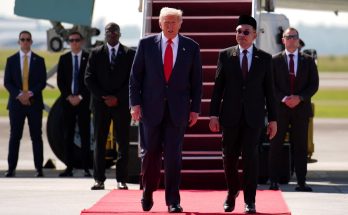The Islamic State (IS), or more accurately, the Caliphate, was proclaimed in June 2014. The proclamation came after a few hundred fighters coming from Syria conquered Mosul, the second largest city in Iraq earlier in that month.
 It will be useful to look briefly at the emergence of the IS. In 2006, the Islamic State of Iraq (ISI) was proclaimed in the west of Iraq, dominated demographically by Sunnis. However, the US sent in more troops and bribed the tribal chiefs and ISI almost died in infancy. The outbreak of the Arab Spring revived it. Initially, it captured territory in Syria and with capital at Ar Raqqa , 450 km to the north-east of Damascus, it declared the establishment of Islamic State of Iraq and the Levant(ISIL). The region of what is now Syria and Lebanon and adjacent areas has been historically known as the Levant. The ISIL was established in April 2013. In June 2014, when the ISIL captured Mosul, it renamed itself as IS claiming to be the Caliphate with universal jurisdiction over all Muslims.
It will be useful to look briefly at the emergence of the IS. In 2006, the Islamic State of Iraq (ISI) was proclaimed in the west of Iraq, dominated demographically by Sunnis. However, the US sent in more troops and bribed the tribal chiefs and ISI almost died in infancy. The outbreak of the Arab Spring revived it. Initially, it captured territory in Syria and with capital at Ar Raqqa , 450 km to the north-east of Damascus, it declared the establishment of Islamic State of Iraq and the Levant(ISIL). The region of what is now Syria and Lebanon and adjacent areas has been historically known as the Levant. The ISIL was established in April 2013. In June 2014, when the ISIL captured Mosul, it renamed itself as IS claiming to be the Caliphate with universal jurisdiction over all Muslims.
Rhetoric and Reality
It is important to distinguish between rhetoric and reality. This necessary distinction is often discarded in dealing with the IS and its threat to the rest of the world has been much exaggerated. There is no earthly possibility that the claimed universal jurisdiction will ever be realized for various obvious reasons. But before we discuss the nature of the threat and the reach of IS let us get to know the IS better.
 As regards the territory and population under its control, there has been much loose talk. Peter Maurer, president of International Committee of the Red Cross (ICRC) stated in an interview to Reuters in March this year that about 10 million human beings are living under IS. BBC and others have reported that IS controls an area as large as Belgium which has an area of 30,000 sq.km. As a matter of fact, the IS does not control its territory in the same manner Belgium does. There are areas under full control of the IS. There are areas more or less under its control, but contested from time to time. There are areas where the IS can stage attacks with a degree of impunity. The fact of the matter is there is much loose talk and a lot of exaggeration. For example, Fouad Hussein, chief of staff of Iraqi Kurdistan President Massoud Barzani, has said that the IS has a territory of 250,000 sq.km and an army of 200,000. According to the CIA’s estimate, the IS has about 31500 fighters. Most probably, the correct figure is nearer to the CIA estimate than to that of Hussein. The Kurds are the only ones fighting the IS on the ground. They need support from the international community and might exaggerate the strength and resources of the enemy they are fighting.
As regards the territory and population under its control, there has been much loose talk. Peter Maurer, president of International Committee of the Red Cross (ICRC) stated in an interview to Reuters in March this year that about 10 million human beings are living under IS. BBC and others have reported that IS controls an area as large as Belgium which has an area of 30,000 sq.km. As a matter of fact, the IS does not control its territory in the same manner Belgium does. There are areas under full control of the IS. There are areas more or less under its control, but contested from time to time. There are areas where the IS can stage attacks with a degree of impunity. The fact of the matter is there is much loose talk and a lot of exaggeration. For example, Fouad Hussein, chief of staff of Iraqi Kurdistan President Massoud Barzani, has said that the IS has a territory of 250,000 sq.km and an army of 200,000. According to the CIA’s estimate, the IS has about 31500 fighters. Most probably, the correct figure is nearer to the CIA estimate than to that of Hussein. The Kurds are the only ones fighting the IS on the ground. They need support from the international community and might exaggerate the strength and resources of the enemy they are fighting.
The IS forces consist mostly of Iraqis and other Arabs. But the IS has successfully attracted young people from many countries, including member states of the European Union. According to Gilles de Kerchove, chief of counterterrorism unit in European Union, 4000 young men and women from Europe have joined the IS and the flow continues. According to CIA Factbook, Tunisia tops the list with 3000, followed by Saudi Arabia at 2500. Other major sources are Russia, Jordan, Morocco (1500 each), Germany, Libya, UK, and Turkey(600 each). Pakistan accounts for 500. In India, the IS has yet to make its mark, attracting barely 10 to 15 people, according to sources in Delhi.
Modus operandi and money trail
As regards money, the IS is rich. It must have got about $480 million from the branch of the Iraqi Central Bank in Mosul. It extracts ransom by kidnapping. It has oil wells and it earned $100 million in 2014 from selling crude. It collected gold and money from Zayidis and Christians for not killing them and letting them go away abandoning their homes.
Life under the IS is rather bleak. Sharia is enforced in a draconian manner. Women have no freedom of movement. But, crime by citizens is low, as only the caliphate commits crimes, with no free media or civil society to question the state.
The US and IS
 Let us take a look at US attitude towards IS. There are a number of Arabs, including some distinguished scholars, who honestly believe that IS is a creation of US. The CIA did it in order to weaken the Arabs in the interest of Israel. It is in the interest of Israel that the neighbouring Arab states such as Syria and Iraq are divided into many smaller states, constantly fighting among themselves, giving Israel a chance to establish its hegemony over the region.
Let us take a look at US attitude towards IS. There are a number of Arabs, including some distinguished scholars, who honestly believe that IS is a creation of US. The CIA did it in order to weaken the Arabs in the interest of Israel. It is in the interest of Israel that the neighbouring Arab states such as Syria and Iraq are divided into many smaller states, constantly fighting among themselves, giving Israel a chance to establish its hegemony over the region.
Reflection shows that the argument about CIA’s creation of IS is without substance. It might be true that Israel wants to see the Arabs weakened. Israel, too, has its ambitions for a Greater Israel and to dominate the region. But it is utter exaggeration to credit the CIA with powers of a Frankenstein to create such a monster. However, there was a time before ISIL was formally established and there were signs that a Sharia-based state might be established in Syria as President Basher al Assad’s army started retreating when the US intelligence assessed that an Islamic State might be a strategic asset for the US to be used against Assad. Declassified papers have made all this clear.
It is to be noted that when the ISIL was proclaimed in 2013, there was no reaction showing concern from Washington. In June 2014 when the ISIL marched to Mosul , the Pentagon must have known it as it controls the Iraqi airspace and observes what happens on the ground. It was decided in Washington to do nothing to prevent the fall of Mosul. Instead, Washington calculated that it is good to let Mosul fall and to use that to put more pressure on Prime Minister Maliki to leave office. He was sticking on to office preventing the formation of a new government after the general election. When after the fall of Mosul, Christians were killed, raped, or permitted to run away if they paid money or gold, there was no reaction from the US. It was only when the IS threatened to get closer to Erbil, the capital of Iraqi Kurdistan, where there are hundreds of US citizens engaged in business including oil, that the US decided to start bombing IS.
In August 2014, President Obama announced his strategy of degrading and ultimately destroying the IS. One year and 6700 air strikes later, the results are mixed. The IS has lost some territory and gained some. According to the US military, there is a stalemate. It is generally conceded by military experts that air strikes alone will not cause the fall of IS. General Martin Dempsey, Chairman of US Joint Chiefs of Staff, has said that 80,000 soldiers might be needed to defeat IS by ground operations. Who will provide the troops? The Iraqi Army is still in a bad shape despite US spending billions of dollars and providing training for years. At present a successful military operation against the IS is not on the cards.
IS has ‘emirates’ declaring allegiance to it in Libya, Egypt, Algeria, Saudi Arabia, Yemen, Afghanistan, and Pakistan. Not all these ‘emirates’ are to be taken seriously. But, some of them do more or less control some territory.
What is the nature of the threat from IS to the rest of the world? In order of vulnerability, first come the Muslim countries from where the recruits have come. Some of them might go back and carry out terrorist acts. Next comes the West. There is fear in Western Europe that the radicals might come back and carry out attacks. There is a similar fear in the US and elsewhere. There is even fear that thousands of refugees coming into Europe from Syria might contain IS men. But, no evidence has been found so far to that effect.
India and IS
How should India approach the IS? There have been a small number of young Indians who have gone and joined IS or have tried to do so. A few suspected IS sympathisers have been repatriated to India from UAE. India should do its utmost to prevent online radicalization and tighten controls at airports to prevent people from going abroad to join the IS.
Should India join the US-led war against IS? It is unlikely that a request will be made as it is well known that India does not wish to be militarily involved abroad unless it is a UN-led operation for peace keeping. India should avoid any such involvement for two reasons. One, such statements do not have any practical adverse impact on the IS. Secondly, India has over 7 million of its nationals in the area and the IS can retaliate by way of kidnapping one or two. Moreover, it is wise not to provoke the IS into taking serious interest in Kashmir.
Russia has recently stepped its military presence in Syria. The US has expressed serious concern. The policy of US towards Syria has been rather confusing. It will be good for Prime Minister Modi to learn as much as possible about the US approach to the region in turmoil and the involvement of external powers therein from President Obama.
(K.P. Fabian is a former diplomat and a commentator on international affairs. This article has been written for India Writes Network)
Author Profile
- India Writes Network (www.indiawrites.org) is an emerging think tank and a media-publishing company focused on international affairs & the India Story. Centre for Global India Insights is the research arm of India Writes Network. To subscribe to India and the World, write to editor@indiawrites.org. A venture of TGII Media Private Limited, a leading media, publishing and consultancy company, IWN has carved a niche for balanced and exhaustive reporting and analysis of international affairs. Eminent personalities, politicians, diplomats, authors, strategy gurus and news-makers have contributed to India Writes Network, as also “India and the World,” a magazine focused on global affairs.
Latest entries
 DiplomacyOctober 4, 2025UNGA Resolution 2758 Must Not Be Distorted, One-China Principle Brooks No Challenge
DiplomacyOctober 4, 2025UNGA Resolution 2758 Must Not Be Distorted, One-China Principle Brooks No Challenge India and the WorldJuly 26, 2025MPs, diplomats laud Operation Sindoor, call for national unity to combat Pakistan-sponsored terror
India and the WorldJuly 26, 2025MPs, diplomats laud Operation Sindoor, call for national unity to combat Pakistan-sponsored terror India and the WorldJuly 25, 2025When Fire Ends, Diplomacy Begins
India and the WorldJuly 25, 2025When Fire Ends, Diplomacy Begins India and the WorldJuly 16, 2025Operation Sindoor and its Aftermath: India’s Successful Diplomatic Outreach
India and the WorldJuly 16, 2025Operation Sindoor and its Aftermath: India’s Successful Diplomatic Outreach







